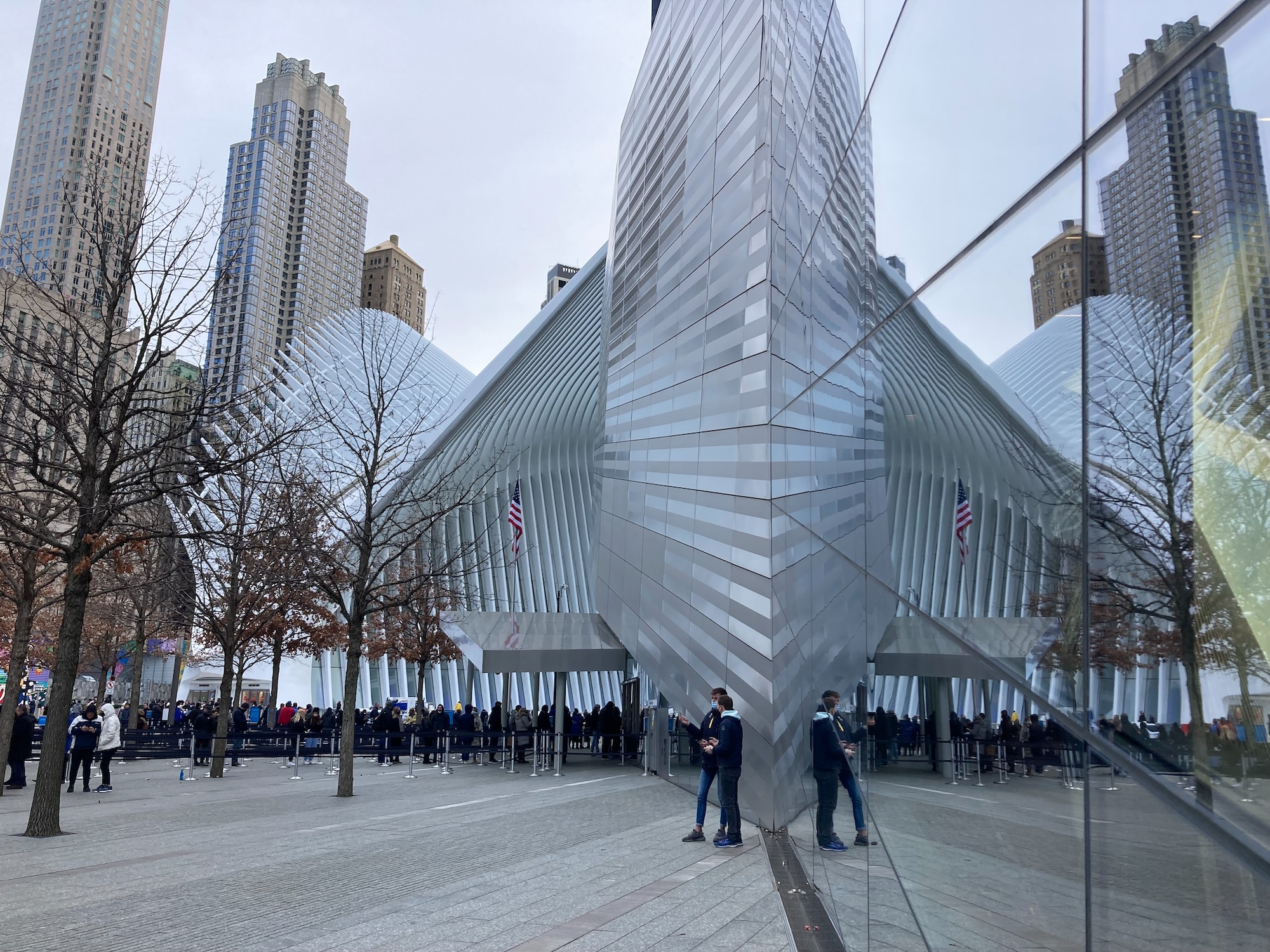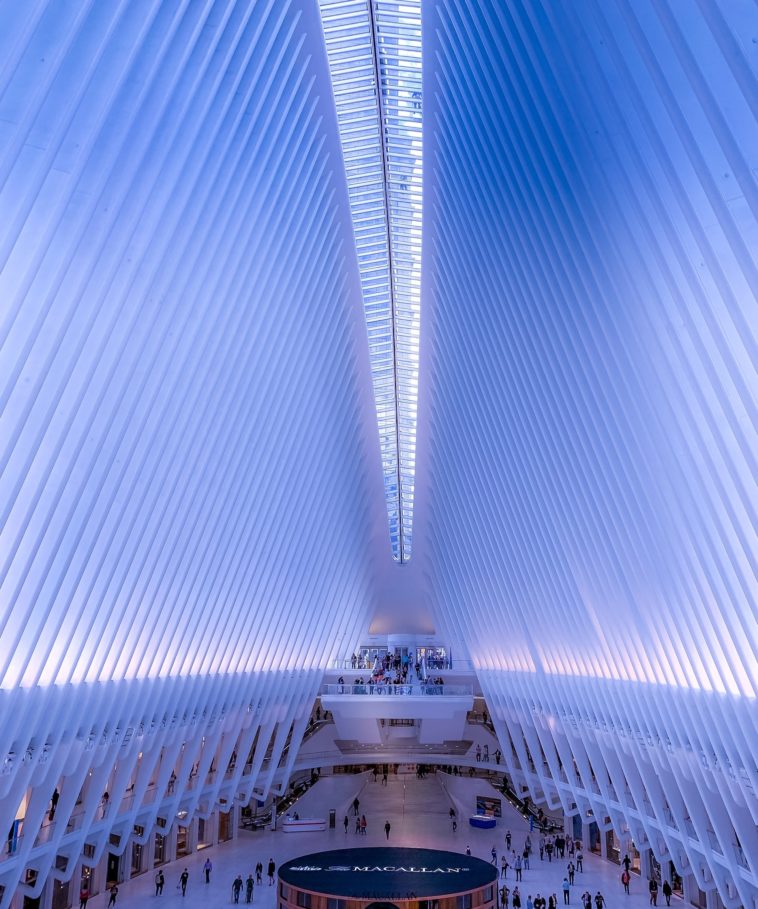In the heart of Lower Manhattan, amid the bustling streets and towering skyscrapers, Santiago Calatrava’s Oculus stands as a stunning architectural masterpiece. As a world-renowned architect, Calatrava has left his indelible mark on cities around the globe, and his creation at the World Trade Center Transportation Hub is nothing short of extraordinary.
The World Trade Center Transportation Hub is not just a functional transportation hub but also a work of art. Its soaring architecture and intricate design pay homage to the idea of rebirth and renewal. It is located in the area of Ground Zero, along with other major icons such as the 9/11 Memorial and One World Trade Center, currently the tallest skyscraper erected on the site: learn more about it and discover when One World Trade Center was built in this article.
Now, let’s delve into the intricate design, symbolism, and significance of Santiago Calatrava’s Oculus, a structure that goes beyond its utilitarian purpose to embody the spirit of resilience and renewal.

Design and Features
The idea of a transportation hub at the World Trade Center site was born out of necessity and a vision of rebirth after the tragic events of September 11, 2001. Santiago Calatrava was selected to design this vital piece of infrastructure, a decision that would ultimately transform the Lower Manhattan skyline.
The Oculus, completed in 2016, is a soaring white structure that captures the imagination from the moment it comes into view. Its design is evocative of a bird in flight, with wings outstretched in a symbolic gesture of hope and renewal. The central atrium, bathed in natural light, is adorned with pristine white marble, creating a serene and contemplative space amidst the bustling city.
Perhaps the most striking feature of the Oculus is its operable roof, which opens and closes, allowing sunlight to enter and creating a dynamic interplay of light and shadow. This mechanical marvel not only adds a unique dimension to the structure but also serves a practical purpose by providing ventilation and climate control for the interior space.

Symbolism and Significance
The Oculus is more than just a transportation hub; it is a symbol of resilience and renewal. Its location at the World Trade Center site, where the Twin Towers once stood, carries immense emotional weight. Calatrava’s design pays homage to the past while looking toward the future. The structure’s upward-reaching form reminds us of the strength and determination of a city that rebuilt itself from the ashes of tragedy.
The name “Oculus” itself is derived from the Latin word for “eye” and aptly reflects the building’s circular openings. These openings align with the sun on the anniversary of the 9/11 attacks, creating a poignant moment of remembrance and reflection. It is a place where people can gather to commemorate the lives lost and the resilience of the human spirit.
Beyond its symbolism, the Oculus also serves a practical purpose as a vital transportation hub, connecting subway lines and the PATH train system. It provides a seamless and efficient transit experience for the countless commuters who pass through its halls daily, further solidifying its importance in the city’s infrastructure.
Santiago Calatrava’s Oculus is a triumph of design and symbolism. It is a testament to the power of architecture to inspire and heal, to symbolize renewal in the face of tragedy, and to connect people across time and space. As visitors and commuters pass through this magnificent structure, they are reminded of the strength of the human spirit and the enduring capacity for hope. The Oculus is not merely a transportation hub: it is a symbol of New York City’s resilience and a beacon of light.





